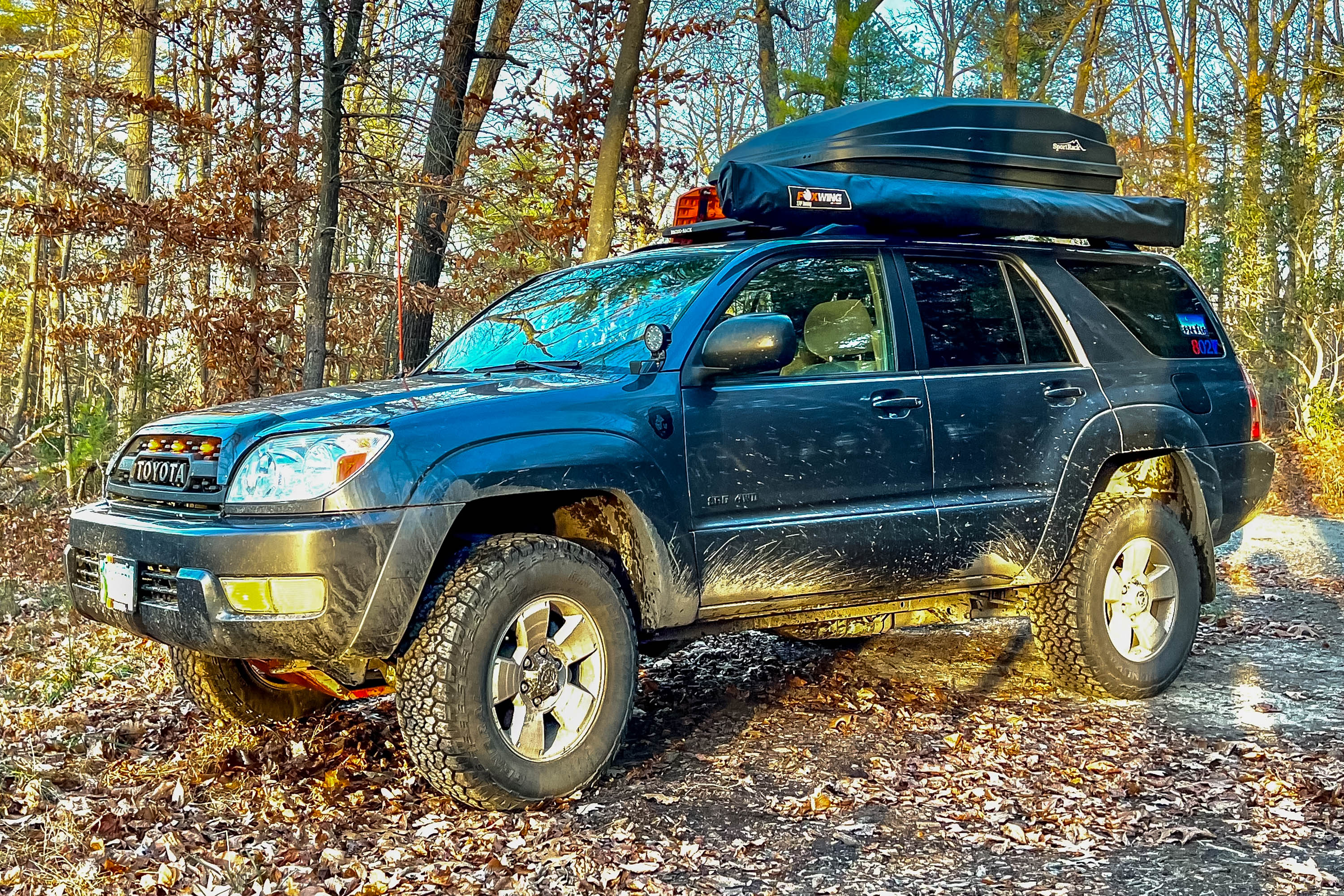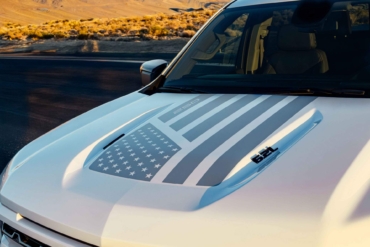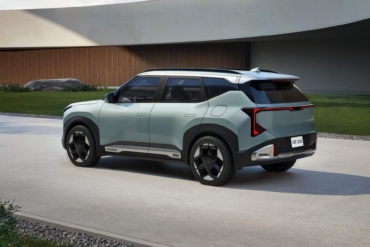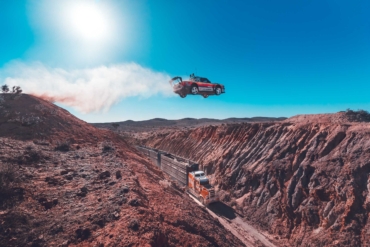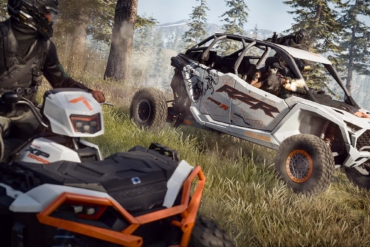The other night, coming home from dropping off my daughter at a friend’s house for a sleepover, my 2005 Toyota 4Runner hit 350,000 miles. Perfectly timed just for the occasion, my other daughter and I were off-roading out in our favorite state forest when it happened. It caused me to hop out of the truck, give my dumbstruck 7-year-old a big hug, and take numerous glamor shots of the rig while the sun set around us and Jerry Garcia soloed on the radio.
Toyota is known for going that extra mile. In fact, there are 4Runners and Land Cruisers on the road with 500,000-plus miles on them. But it takes a lot to get there.
350,000-Mile 4Runner
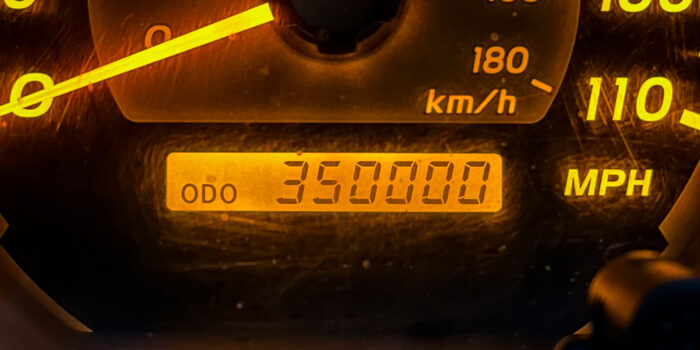
By the time you finally arrive at a milestone like 350,000 miles, you’ve had the head rebuilt, gone through numerous suspension components, at least one radiator, a myriad of synthetic lubricants, and a ton of fun.
If the vehicle is used for the off-road adventures it was built to tackle, there will also be numerous upgrades to consider. Upgrades like; lifts, a cold air intake, tires, and even some electronics.
Long-Term Relationship
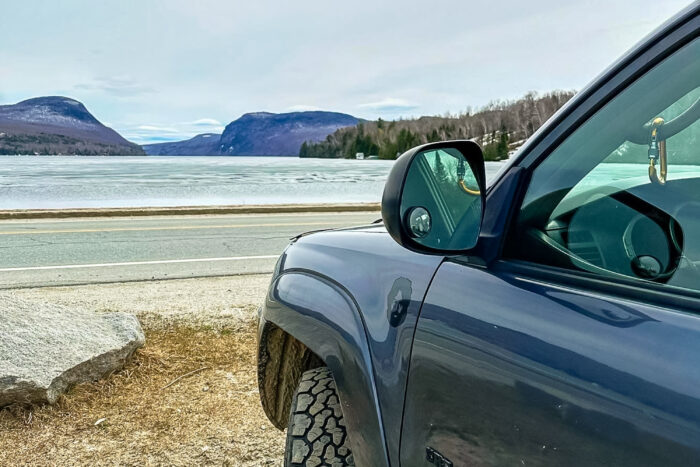
I won’t call my 4Runner an investment. But I will call it reliable, dependable, and kept up. I’ll even go as far as saying that even though it does require a little TLC, it’s still cheaper to own this rig than something brand new. Having almost traded it in twice, I’ve run the numbers more than a few times.
So, what did I do to get here? What do I keep with me to keep the truck running? What don’t I do with this truck?
After 9 years of ownership, I’ve learned a lot about this 4Runner as well as myself and my habits. In essence, we’ve grown together.
Below is a list of information and tips about this whole experience with my 4Runner. A lot of this information can be applied to other vehicles on the road. But, I doubt many other vehicles will make it to 350,000 miles or beyond.
About My 4Runner
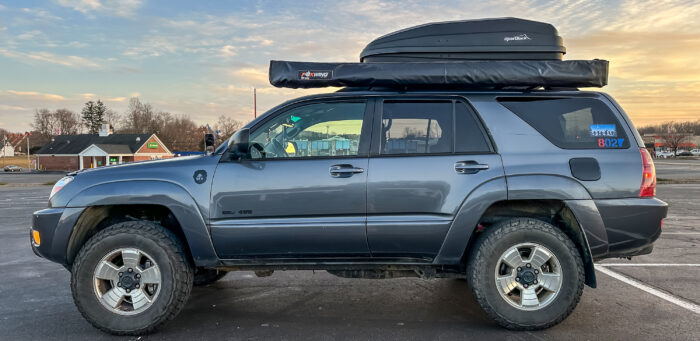
My 4Runner is a 2005 Galactic Mica Grey SR5, 4.0 V6. It was originally owned by a little old lady who lived down by the shore in Connecticut. She kept it wicked clean, which I still do now. It had 147,500 miles on it and I paid $10,000 flat for it from a used car dealership.
It had a clean title and miles of service records. The original owner followed Toyota’s service recommendations to the dot. In fact, the only thing that wasn’t stock on the truck was the aftermarket remote starter.
I bought this truck to be a daily driver and expected to get a year out of it. I’m happy to say that I am glad that didn’t work out to plan!
Readily Available Parts
The fourth generation of 4Runner runs from 2002 to 2009. That means that there are a lot of OEM parts as well as aftermarket parts available to you at affordable prices.
Additionally, the suspension on the 4th Gen is nearly identical to the FJ Cruiser (2007-2014). This means that you won’t need to break the bank to keep this particular model of 4Runner on the road.
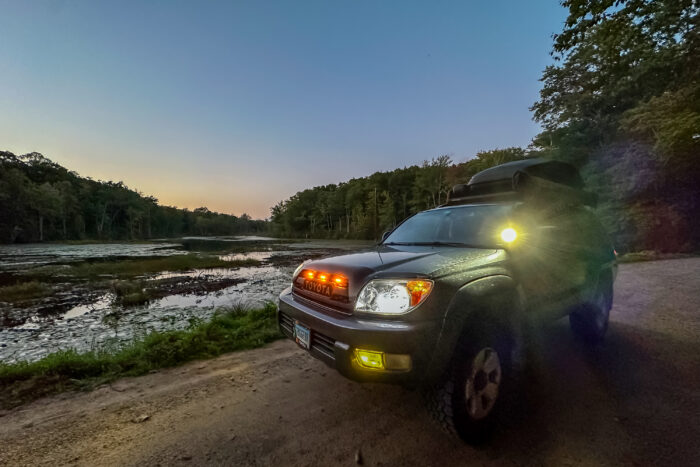
Steady Driving Habits
We’ve all seen the videos of these folks jumping their 4Runners over boulders and driving them through rivers. That’s cool and all, but that’s far from the norm — especially if your rig is your daily driver or you want it to make it as far as mine has.
I’ve owned this 4Runner for 9 years and 200,000 miles. About 100,000 miles ago I decided to stop bombing down trails and shifting it into 4WD on the fly. I make a full stop to engage or disengage the 4WD, shifting it into Neutral and letting it roll in and out.
Toyota recommends that you drive at least ten miles a month in 4WD. I recommend it as well. There are a lot of moving parts in that transfer case and everything that connects to it, so you want to make sure it’s being used and is well-lubricated.
I’ve also realized that this truck wasn’t built for speed. Even fresh from the factory 4Runner’s aren’t designed to race down the road. They’re meant to cruise. So, I’m never in a hurry to get anywhere. Can it get up to 100 MPH? Yeah. But that would be a strain on the truck and a drain on the upwards of 19.5 MPG that I get.
Drive it like you depend on it!
Keeping It Clean Matters
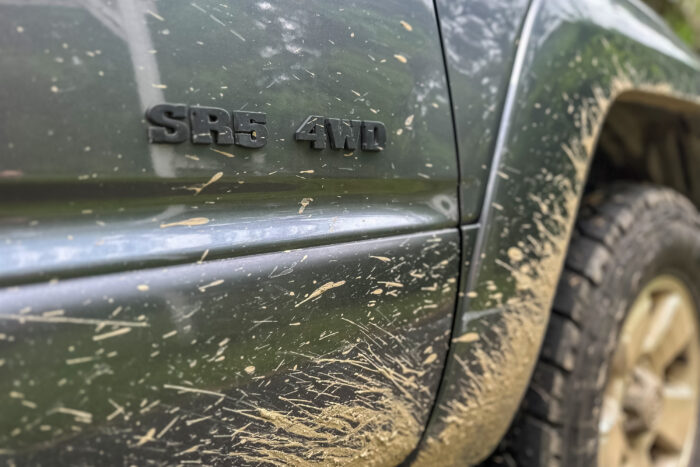
Inside and outside, dust and dirt can break your vehicle down. But there’s also something to say about pride in one’s vehicle — so don’t leave your cheeseburger wrappers all over the place.
If you go off-roading or get your vehicle muddy, show it off for a day or two. But make sure to get that mud and gunk off of your undercarriage and out of the wheel wells. Mud will break down the coating on your vehicle’s frame and lead to rust.
Regarding Fuel
The jury is still out on whether higher octane gas is necessary or if it’s just a gimmick. I think there’s enough information out there telling us that higher octane does have a positive impact. I can’t say for certain about all of the vehicles on the road, but an older vehicle will benefit from higher octane fuel. On average, I get 2-3 miles more per gallon if I go with 93 over 87 octane.
And How About Fuel Additives?
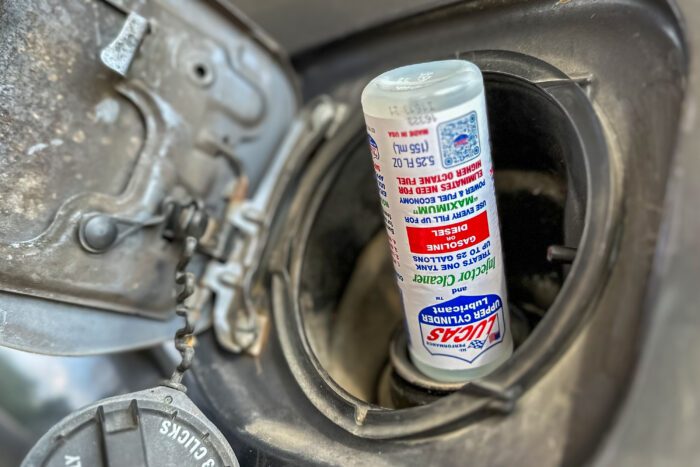
Growing up, there were a lot of performance boosters you could add to your gas tank to juice up your horsepower and clean your injectors, etc. Unfortunately, that stuff was really bad for your vehicle — whatever that vehicle was.
But, I do recommend a steady diet of Lucas Oil Injector Cleaner or Seafoam High Mileage Motor Treatment to a tank of gas to keep things running smoothly. I add a bottle every 5,000 miles, to a near-empty tank of gas.
Routine Maintenance Is More Important Than Ever
When I first bought the truck, I was taking it to my local Toyota Dealership. They put the lift on it for me, eventually rebuilt the head, and knew the truck just as well as I did — if not better. But there’s really no need to do that on a truck this old with this many modifications. You’re going to be paying dealership prices when you don’t need to.
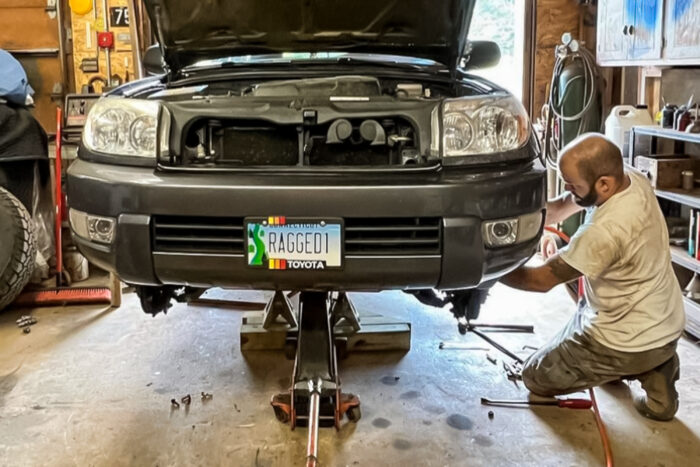
Take your truck to a reliable, local mechanic and follow their recommendations. Share with them the recommended maintenance routine that Toyota recommends. They will always be more affordable, and you’re supporting a local business. That said, don’t be afraid to make a few recommendations of your own to them.
Some of you are probably rolling your eyes right now and wondering why I don’t do my own maintenance. That’s fair. I don’t do it because I don’t want to deal with the mess and hassle of disposing of old parts, oil, etc. I also like knowing that the person working on my truck might find something else when they’re under the hood and can either fix it while they’ve got the truck or at least let me know so I can look into it and make a decision.
This 4Runner is my daily driver and I don’t have a lot of time to deal with downtime. Also, air tools come in wicked handy on 18-year-old bolts that have been submerged in myriad puddles, mud, and snow.
Ultimately, do what the owner’s manual tells you. Keep the ball joints lubricated. Flush the radiator.
If you’re going to take your vehicle off-road keep in mind that AAA isn’t going to send a tow truck out onto the trail.
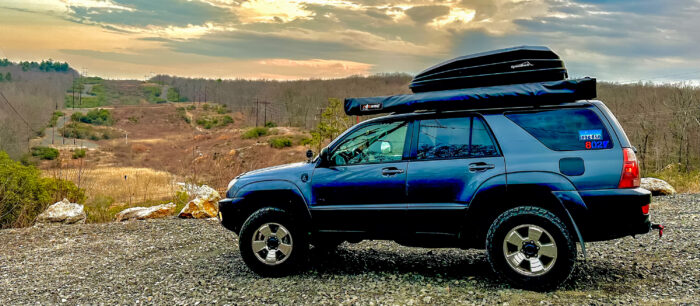
Aftermarket Parts Are Often Fine
Not everything needs to be OEM. There are a ton of aftermarket parts out there that could save you even more money.
Case in point, I switched over to Royal Purple Full Synthetic Oil at 200,000 miles. RP recommends you change your oil every 10,000 miles — my mechanic says 5,000. All of my love to the guy, but I’ll stick to what the manufacturer recommends and save some coin.
You Should Have a Personal Toolkit
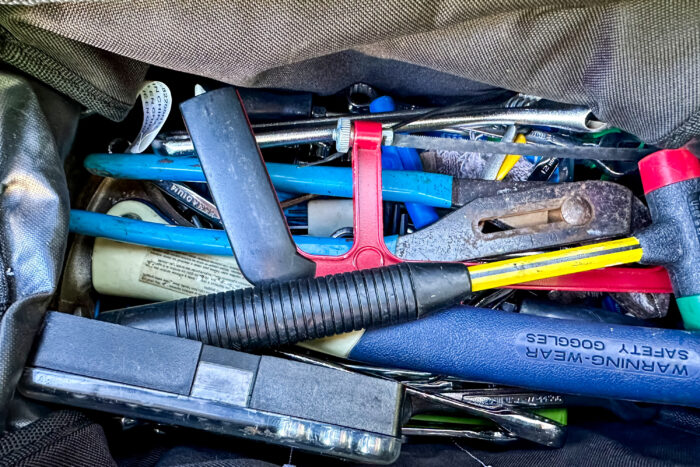
Toyota is pretty meticulous about the bolts, screws, brackets, and random hardware they use on their vehicles. That said, they like to keep the sizes the same on their bolts wherever they can. My recommendation to anyone looking to build a toolkit for their vehicle is to find out what those bolt sizes are and get at least two of each socket, as well as two socket wrenches, or a solid set of crescent wrenches.
You’re also going to want to keep an eye on anything electrical and be able to compensate for any failures on the go. Whether you’re on the road or the trail, you need to make sure all of your lights are working properly. If you’ve added accessories like off-road lights or even auxiliary plugs, it doesn’t take much effort or room to bring along some butt connectors and fuses.
There’s no such thing as having too many hand tools with you, but it’s important to have the right tools.
That said, here’s everything I keep in my toolkit:
- Sockets and socket wrenches (10-12mm are a big deal on this 4Runner)
- Philips and Flathead Screw Drivers (Short and Long)
- Mallet (Not a hammer!)
- Hacksaw
- Vise Grips
- Duct Tape
- Fuses
- Auxiliary Bulbs (Blinker, Brake Lights)
- Butt Connectors
- Electrical Tape
- Zip Ties
- WD-40
- Spare Key
- OBD II Scanner
As you can see, it’s not a ton of stuff. But what I do have in there allows me to repair most everything that can go wrong with the truck that’s not catastrophic.
Additionally, I have whatever tools I need for accessories. If I bolted something to the roof rack and it had a particular bolt size or Allen key, I have those in that kit as well.
The OBD II Scanner is a must-have in any older vehicle. This will keep you from going broke.
That said, and I think this is important — I rarely need that toolkit or scanner. It’s all in the back of the truck when I do, but it could be 6 months to a year before I need to use it. Eliminating some of the clutter in your toolkit can really help out when you’re in a jam and not thinking straight.
Communication Upgrades
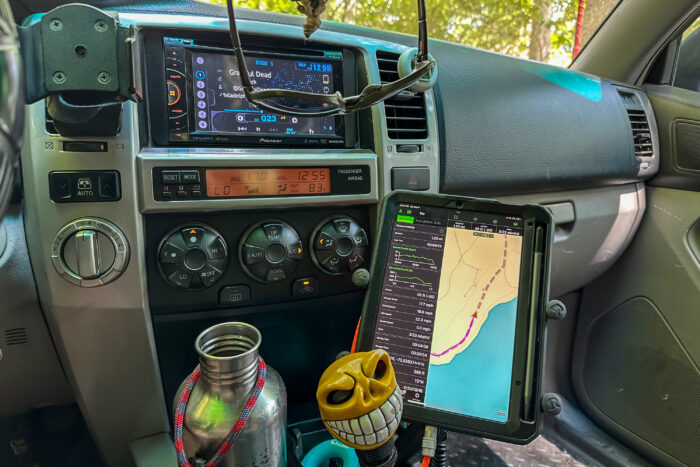
These older 4Runners don’t have Bluetooth or any type of phone connectivity, so a stereo upgrade was a must. I’ve since added a portable CB Radio, an extra 12V port in the dashboard, a phone mount, and an iPad mount.
It’s wicked important to make sure you’re connected in one way or another. This is amplified exponentially if you are off-road or on an overland adventure.
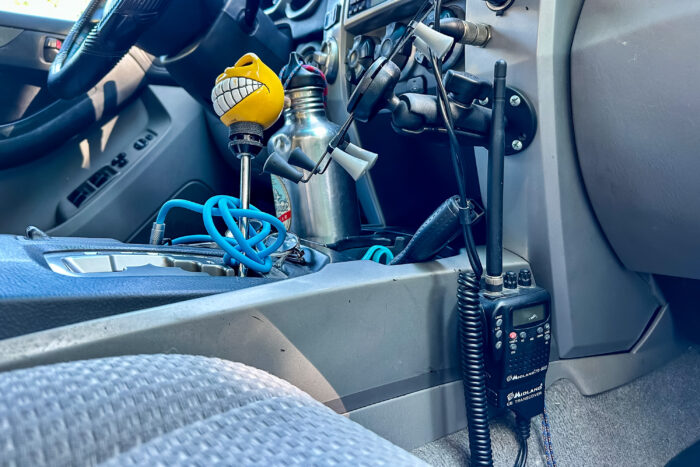
But, also, these creature comforts are part of what’s keeping me satiated. I love the fact that I could hop into a 2023 4Runner and my phone automatically connects to a stock head unit that has Apple CarPlay, I just don’t want a $1,500 per month car payment.
Lighting Upgrades
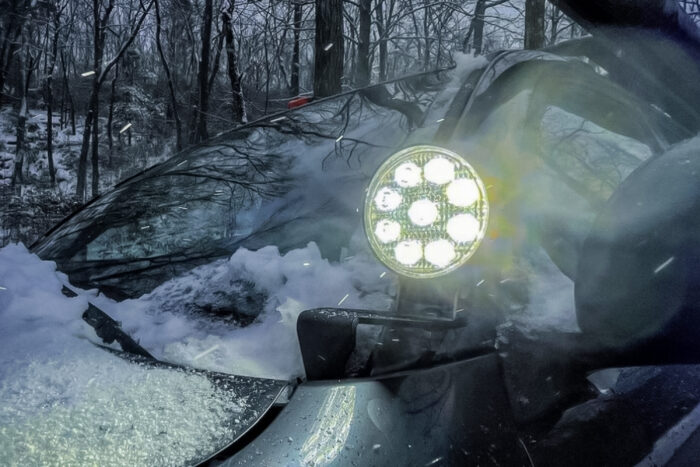
Being able to see at night and in the rain is a pretty big deal. When this truck came out, in April of 2004, there weren’t LED lights available. But since then, there has been a considerable amount of innovations in lighting technology.
I use Sealight bulbs for all of the exterior and interior lighting. They provide bright, clean light, and last longer than the halogen bulbs that were originally recommended for the truck.
As far as anything and above what originally came with the truck, I added an off-brand LED ditch light from Amazon on the driver’s side. The single ditch light is more than enough on and off road, and it wasn’t too bad to wire up to its own switch. It offers over 2,000 lumens of light in a flood pattern.
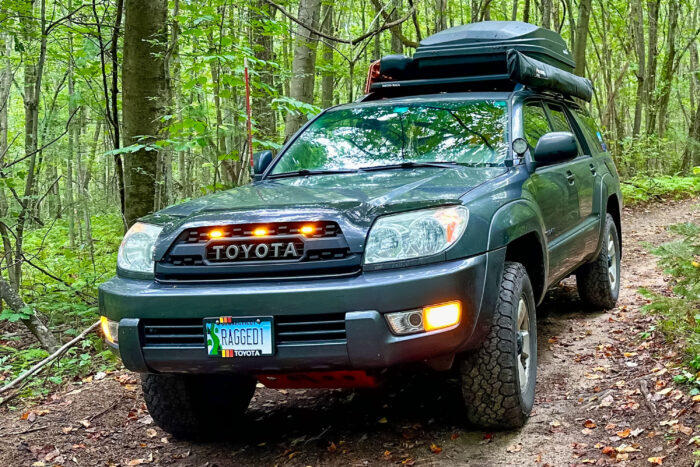
I also added raptor lighting in the grille, which is from a company called Garage Alpha. They were the first company to offer this style of grille and though it took about six months to arrive — they’re readily available now.
All in all, whatever you’re driving, upgrading to LED where you can is a benefit to your vehicle as it’s less of an energy draw. Additionally, they do last longer than conventional bulbs and, in some cases, can cost less.
Battery Upgrades
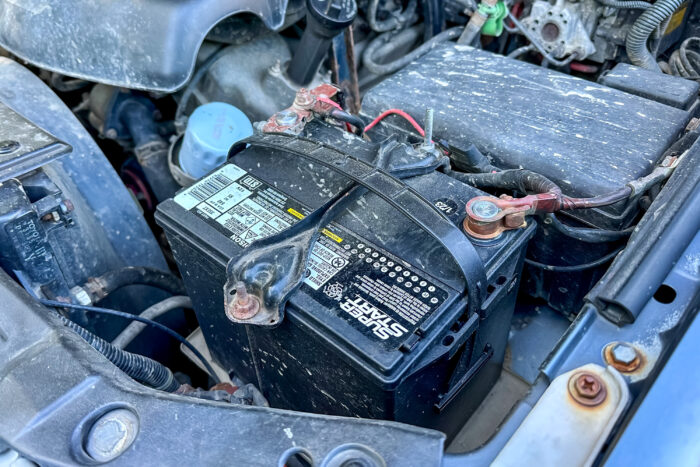
My current battery is a Super Start Extreme. I used to run Optima Yellow Top batteries until I found these. They both come with a 3-year warranty and are similar in what they offer in cold cranking amps. But, they’re two completely different batteries, technically. The Super Start is a “Standard Flooded” battery, and the Optima is an “Absorbent Glass Mat” (AGM) battery.
Keeping this light and lively — flooded batteries have been around forever and are what a majority of vehicles run on. They contain liquid inside whereas AGM batteries use gel which is less messy and could last longer than a flooded battery.
Realistically, with a 3-year warranty on both of these batteries, the benefits of one over the other are moot to me. It gets nippy here in New England, so I went for the battery that had more cold cranking amps and cost less. $100 less…
Rooftop Accessories
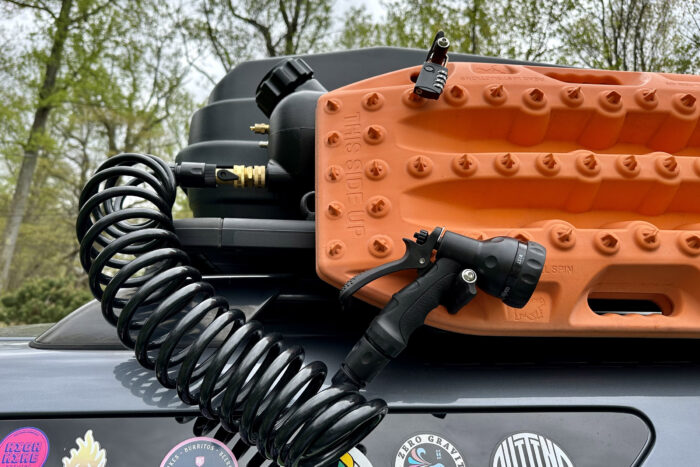
I’ve done a lot to my 4Runner over the years. With a background in roof rack engineering, you can bet your bippy I’ve got all sorts of fantastic things bolted to the roof.
But not a rooftop tent. I like to have fun, but I am not a masochist. Those things can ruin your suspension if you leave them up there for too long. And let’s be honest, most of you do.
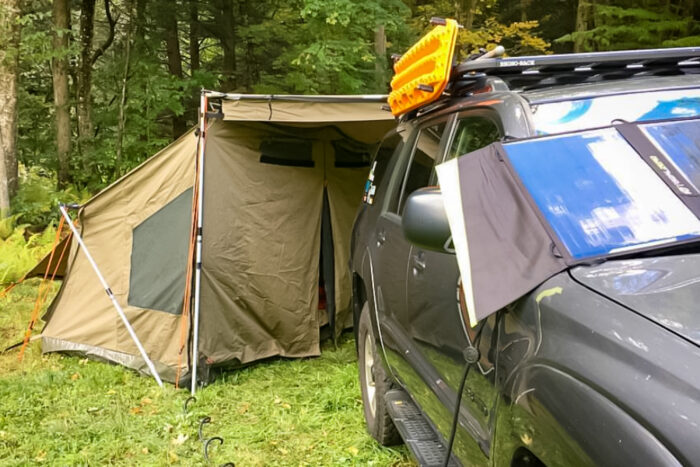
In terms of solid bolt-on accessories for your roof, you can’t go wrong with the basics: a solid platform and awning. The platform gives you a great space to add accessories while dispersing the weight much better than crossbars and load bars can. You can use the awning as shelter from any storm or just a place to take a break. From there, you can mix and match what you’ve got up there to suit your needs.
Here’s what I’ve got up top:
- Rhino Rack Pioneer Platform
- SportRack Vista XL Cargo Box
- Oztent Foxwing 270 Awning (and tent!)
- Waterport Weekender
- Maxtrax
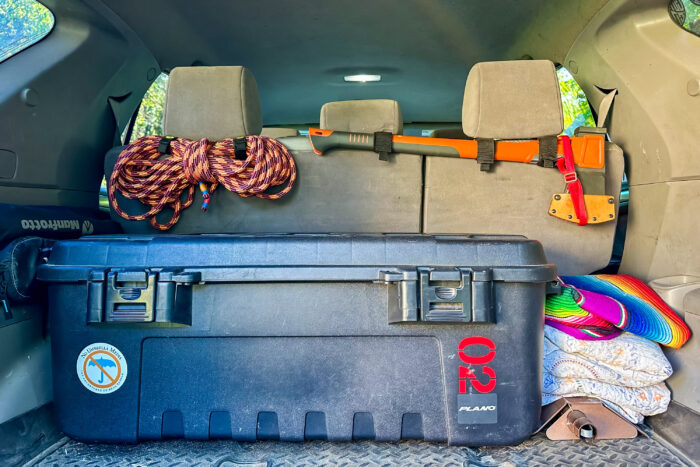
I have also carried a shovel and axe on the roof, but as cool as that all looks, they will degrade in quality when constantly exposed to the elements. So I keep a DMOS shovel in the back along with a Husquvarna axe.
Mechanical Upgrades
In terms of mechanical upgrades, I’ve kept it simple. 4Runners are tuned very specifically from the factory; it’s something you need to get used to. They all rumble and shake when the AC is on. They have a downhill assist that can really freak you out at first.
But there are a couple of wants that turn into needs as time goes on with a 4Runner. Those are the exhaust and the Cold Air Intake (CAI).
Cold Air Intake Debate
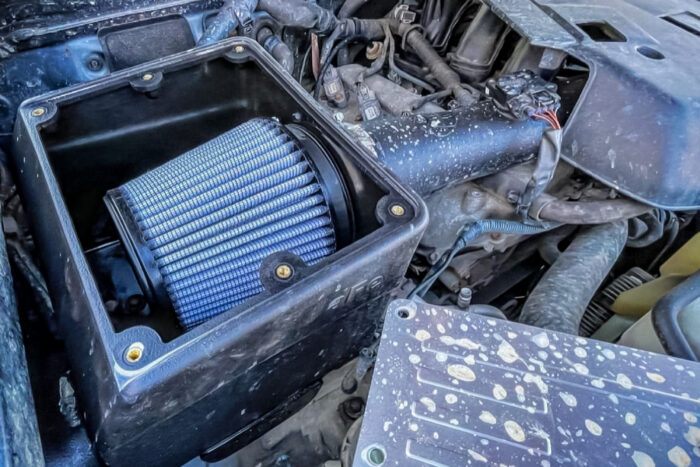
The CAI was an upgrade I struggled to make for years. Mileage is always an issue with 4Runners, even the 5th Generation models. One of the best ways to improve your gas mileage (aside from 93 octane), is replacing the stock air filter. I did that, and I didn’t get much in terms of results. So, I decided to replace the whole air box with something less restrictive.
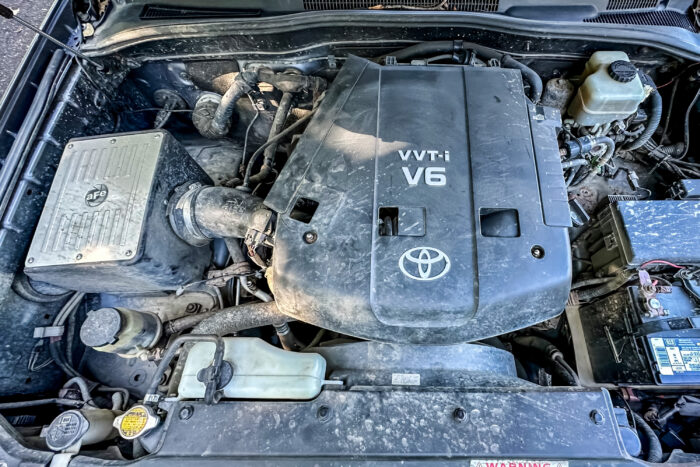
The internet and my small circle of gearhead friends are divided on the effectiveness of CAIs. Some folks think they just add in a nice throaty sound, others praise them for an increase in gas mileage. I’m happy to tell you that the aFe kit I put in does both. I went from 15-17 mpg to 18-20.
I also picked up a little growl that’s amplified by the custom Flowmaster exhaust I had made for the truck.

Exhaust Upgrade
Toyota 4Runners come with a lot of restrictions built into their factory exhausts. There’s a muffler and a resonator, as well as four catalytic converters. That’s a heck of a lot of stuff that helps keep the vehicle quiet, running smoothly, and passing emissions. But when they go, it could cost upward of $4,000 to get them replaced.
At 185,000 miles, the stock resonator rotted off and required me to replace everything from the rear cat’s back to the exhaust tip. Part of the expense was in the fact that the resonator was behind the rear axle and required all sorts of wild pipe bending to get a new, OEM setup installed.
I wasn’t up for any of that. So I had a custom exhaust built off of a Series 50 Flowmaster that eliminated the resonator. It’s proven its worth in spades since.
Suspension Upgrades
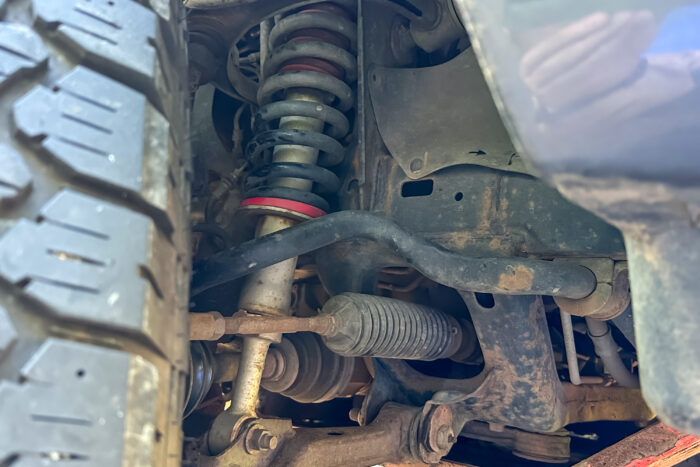
Now, where people really screw the pooch with 4Runners is with lift kits and tires.
Even some of the most experienced folks I know are under the impression that you can add a bunch of inches in height without replacing control arms, adjusting the steering shaft for the new angle, or even considering beefing up the rear end to compensate for the massive tires you’re going to stuff in the wheel wells.
Speaking from personal experience, a 3-inch lift is the most you should consider going or you’ll be compromising suspension components for years to come. And, that can get wicked expensive quickly! I know, because at 350,000 miles, I have replaced every front-end suspension component you can.
I originally went with a DayStar Comfort Ride Lift on the truck. It provided 2.5 inches of lift, which leveled the truck off nicely. But the issue with kits like this is that they’re rubber spacer blocks that are bolted on top of your struts, or wedged in over your coils in the back. They do the trick, but the ride can be a little bumpy, and eventually, the rubber starts to compress and you lose the lift.
At 300,000 miles, I swapped all of that for something with fewer moving parts. I’m currently running with the rear coils off of an FJ Cruiser, Rancho QuickLift Suspension Struts, and Adjustable Shocks, which give the front 2 inches of lift. This allows me to keep everything within the parameters of what the control arms and drive shaft were designed to work within.
The setup also allows me to run 265/70 R17 tires without any rubbing.
Where the Rubber Meets the Road
The tires, which are General Grabber AT/X’s, are only one tire size larger than stock, which is fine by me. The written rule is to never go more than two tire sizes over OEM. In the case of the 4Runner, even with a bigger lift, I would need to cut the front bumper, and possibly change out the upper control arms to go any bigger. Believe me, I looked into it.
I’ve also considered wheel spacers to give the truck a wider stance. I had them on a Tundra I owned and loved them. However, being that this truck is older, and has had a lot of front-end work done to it already, I don’t want to wear down anything prematurely.
Favorite Thing: The Rear Window
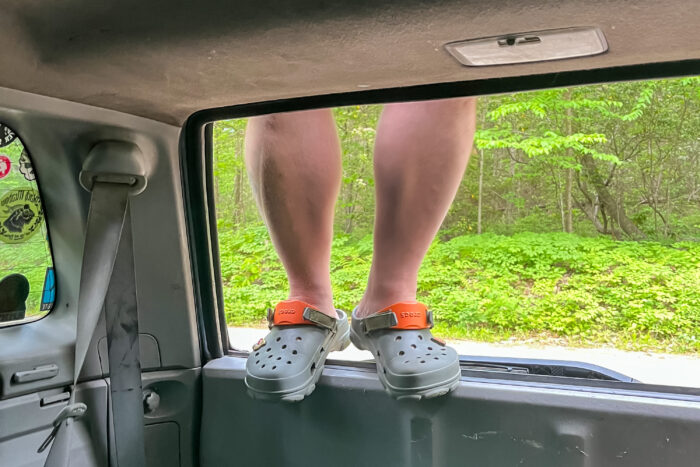
From the 3rd Generation of 4Runners up to the current 5th Generation, all 4Runners have a rear window that rolls down. This allows for some stellar airflow in the summer, but even bigger are the opportunities that it provides you.
Having a rear window that rolls down in an SUV allows you to treat your 4Runner as if it were a Tacoma and use the cargo area as a bed. It also allows you to climb up on the roof easily.
The downside is that it allows more dirt into the truck when you’re out on the trail. But, the trade-off is totally worth it.
Least Favorite Thing: The Idiot Lights (As My Dad Would Call Them)
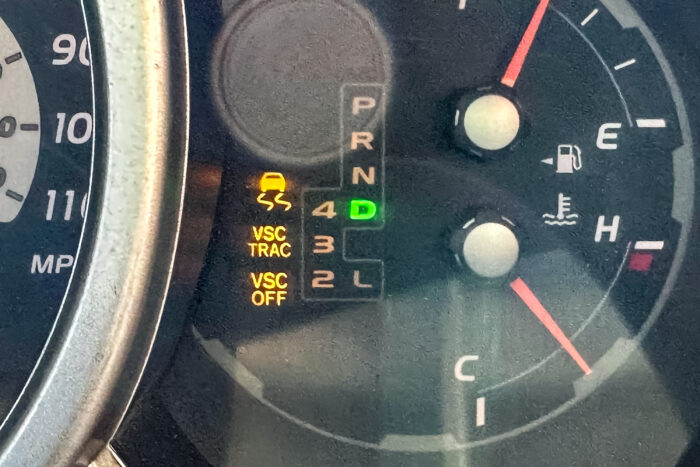
I’m not sure if this was just bad engineering or someone being a prankster, but if you have any issues with your exhaust system or gas cap, a series of lights will show up on the dash. One of these is the traction control light and it’s not just for looks. Even though the two are completely unrelated, if the computer in the 4Runner senses a lack of pressure or a leak, it will turn on the check engine light and turn off the traction control.
And it’s very sensitive.
As you join the ranks of “4Runner owner” and start following 4Runner-related social channels and read up message boards, you’ll find that this is the No. 1 complaint about 4Runners because it could cost you thousands of dollars to fix — but only be a $20 problem.
So, here’s my protip for anyone who is experiencing this or someone planning to buy a 4Runner (and will eventually experience it):
- Check the gas cap. Replace that first if you’re going to replace anything.
- Pour a bottle of LucasOil Injector Cleaner or Seafoam High Mileage Motor Treatment into a near-empty gas tank. Fill the tank, and reset the dash lights with an OBD II Scanner.
- Check for exhaust leaks.
- Replace the O2 Sensors (All 4, don’t be cheap).
- Replace the catalytic converters (if someone doesn’t steal them first).
- Get a paper route and save up the $4,000 for a new exhaust.
Old Vehicles Require You to Think Big Picture
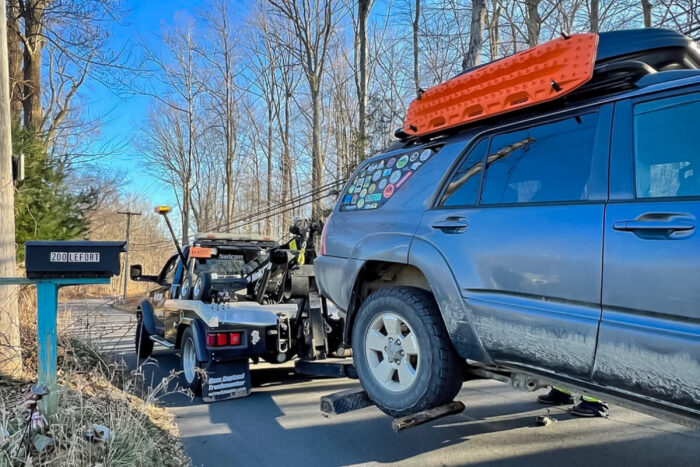
At this point, almost everything that should have been replaced on the 4Runner has been. Both the transmission and rear-end are sealed so they should last me another 350,000 miles, but only time will tell.
In all honesty, unless I can find another 4Runner with parts I can farm, replacing the transmission or rear-end would probably be it for me. I have to be realistic in what I put into the vehicle, or it will become an investment.
Case in point, the wheel bearings and hubs. Those should have shitted the bed 250,000 miles ago but hung on until last week. My local mechanic wanted $2,500 to replace them. I spent $400 and an afternoon in my best friend’s garage and we banged it out listening to Jimmy Buffett (RIP).
Trucks like this — when they get to be this old — require you to think big picture. Yes, a Toyota 4Runner is probably one of the most reliable 4WD vehicles in the North American market, but if the vehicle is only worth $5,000, you’re not going to get any more out of it by putting $5,000 into it. This is especially true in the market we’re in now.
350,000-Mile 4Runner Conclusions
The one thing about 4Runners is that the people who buy them hold on to them. That means that they generally take care of them. They hold their value, and even in a more stable used vehicle market, you can expect to spend more on one of them than any other domestic 4WD SUV out there. But, you get what you pay for.
The day I bought this 4Runner, I was driving back from having a water pump blow on me in a Jeep Cherokee during a test drive. It was $3,500, and I could have paid cash for it right there. But, I know it wouldn’t have lasted as long as my 4Runner has so far. Sorry, Jeep owners — but no Jeep will. At least not with a major investment in replacing all of its major components.
As I said, I never intended to keep this truck as long as I have. But it becomes a mental thing, one where you try and see how far it’ll go. I was stoked when I hit 200,000 miles and never figured I would be here 150,000 miles later.
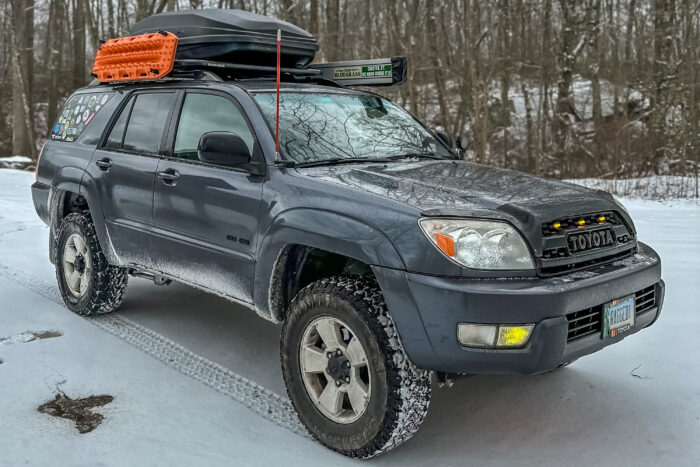
To get here, you have to constantly remind yourself that this vehicle is not a spring chicken. It’s going to have a bit of an oil-burning smell to it. Bolts will be rusty. Heck, in the winter, it’s going to make some creaking noises that will bug you out for a little bit. It’s all part of it.
And you will be tempted by the newer and finer things on the road. I have been. I almost bought a 2016 4Runner TRD PRO in March. But when the two trucks were parked side by side, and I realized the things I had done to mine, that TRD PRO was just prettier. It wasn’t any better.
My 2005 4Runner is still safe and reliable. I’ve done a lot of work to keep it that way, as well as a lot of research regarding what’s best for it. If you’re willing to take on a milestone like this, here are a few last tips I will leave you with:
- Be patient. Don’t just jump on the first vehicle because it’s what you want.
- Don’t lose your shirt in upgrades or repairs. Know when to walk away.
- Do your homework. Read the forums, not reviews.
- Enjoy the ride.
